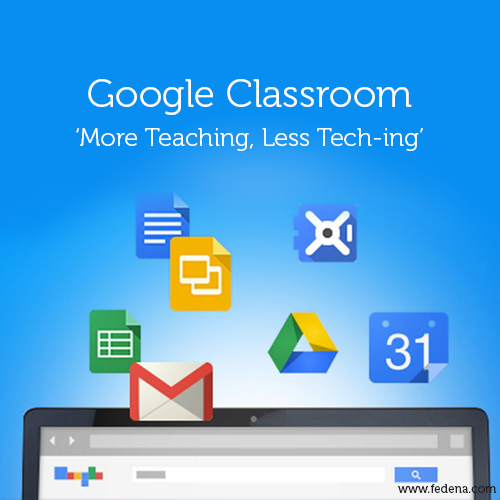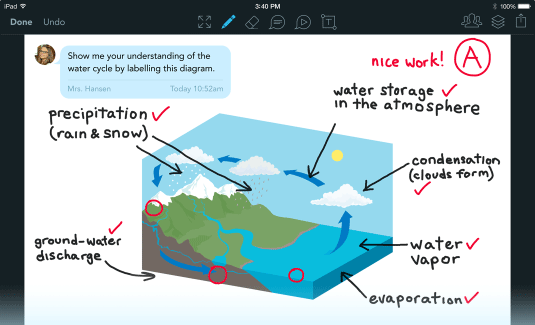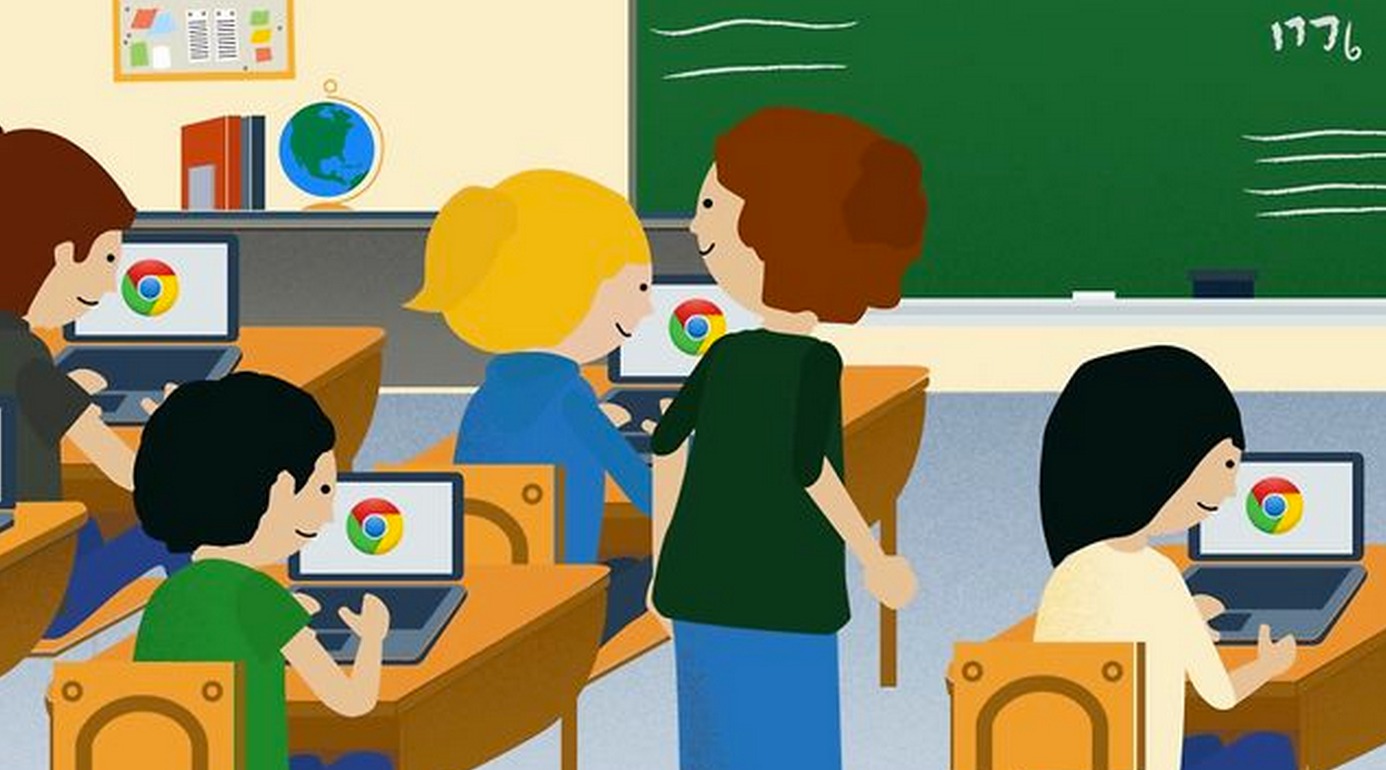It seems that everyone has this idea of the “transformative” use of technology in education. Every technology event I attend, just about every “evangelist” trainer, every company sales person or “education specialist” and every fan-boy/girl has this view that digital technology is a life-changing, wonder tool to inspire and change you into a digital media, electronic innovator ready to save the world.
HELLO!?!
Technology allows us to do old things in more efficient ways and to do new things that were not possible before technology was available. This is the concept behind SAMR – a model developed by Dr. Ruben Puentedura (@rubenrp on Twitter) to “help” educators design and implement digital learning experiences.

I’m all for the aspiration to create learning experiences which are in the redefinition area – transformative – doing “digital” things that we could never have done before BUT what I am REALLY fed up of is the idea that activities that are “Augmentation” and “Substitution” are of little value.
Throughout history, the introduction of technology has brought improvements to functional tasks: the introduction and development of Edmund Cartwright’s Power Loom radically changed textile production by functionally improving the loom design in the late 18th /earlier 19th centuries; Ford’s Model T revolutionized car ownership in the US because it made cars affordable, the process of traveling by car remained relatively unchanged; the vacuum cleaner improved the cleaning of our homes in the post-war era – our homes have never been cleaner but we’re just sweeping with a “hoover”; the electric typewriter improved on the manual typewriter and then gave way to the wordprocessor – the basic task is the same.
All these innovations incrementally improved the basic tasks involved. Each made the task a little easier, a little more accessible but retained enough familiarity with the previous format that those involved understood what was required – the weavers using an industrial loom used their weaving skills to ensure the quality of the fabric produced; manual typists quickly adopted the electronic typewriter but their skills still allowed them to work with the new machines.
And yet, when we evangelise about technology, the value of doing the “same thing” with digital tech is often undermined – I’ve been told “but that’s not transformative” when I’ve explained how Google Classroom allows teachers to hand out their worksheets/notes and process their return and marking – “it’s just doing what you could do with paper – why bother?”

The whole reason to bother with substitution/augmentation tasks is to gain the efficiencies of time, reduce the level of administration and reduce opportunities for learners to go down the wrong path (you can’t forget to pick up the homework – it’s online and I’ve sent it to you!). Education has rarely benefited from the time saving introduction of technologies – often the introduction of technology adds more time and complexity to a task. Using technology to perform common, simple tasks and benefiting from time, resource and other gains is a good thing!
SAMR shouldn’t be used as an instrument to beat over the heads of our educators – it’s a useful point of reference – something we can consider BUT for many of our teachers doing what they used to do, bringing it online – sharing their learning resources and exchanges to support learners in an online space such as Google Classroom or OneNote Class Creator, is a fantastic step forward and a hugely positive use of technology. We don’t need anything more complicated to be innovative – we’re about helping learners to learn – we are not here to be digital “show-offs”.

Part of the reason that technologies haven’t made the significant impact that we all hope for is because doing all the “wiz-bang” stuff we see at CPD sessions or conferences is often very hard to reproduce in a time-sensitive, resource poor classroom.
How many events have you attended where the trainer demonstrates a great app to make a video and then talks about “workflow” to get the content off the device and shared with the world? (I’m looking at you Apple). How many times have you tried to use an online service only to find that the app doesn’t work with the free service for education (and you Microsoft). How many times have you waited 20 minutes just to get your class logged into the computers and ready to start (and you Windows – Microsoft again!)? The innovative and aspirational demos of technologies we are sold don’t reflect the truth that lots of technology is difficult to use in Education – the added complexities of networks, filtering, support all add to the headache. We need to keep things simple because that ensures success.

Our teachers can and do embrace small changes, mini-digital revolutions, changing small aspects of practice to use the digital tools they can be confident will work successfully. Focus on what works, give teachers clear practical ideas to implement in the classroom such as:
- using a shared Office 365 Word Document for learner work – learner shares it to the teacher – teacher comments digitally on the document using the review tools.
- three learners all working on the same presentation. Shared Office 365 or Google Slides document – all working on separate slides AT THE SAME TIME (real-time multi-user editing).
- issue assignment using Google Classroom from a Worksheet uploaded to Google Drive. It will copy and issue the assignment for you to your class and provide a “turn in” button for learners – it even organizes your marking for you.
- Use a blog to share learning from the class each day. Take photos to provide evidence of progress and upload these to the blog.
- Use an app like Skoolbo or Tynker to engage with literacy/numeracy or computer coding. While your learners are using the app, you can focus your time on supporting others.
All of these are happening in our schools. None of these is a transformative experience according to SAMR but they are all relevant, valuable and purposeful activities for learners and teachers. SAMR? It’s only one way of looking at technology – I’m much more utilitarian.


jgmwalsh
RT @charlie_love: Could SAMR be a load of tosh?!: It seems that everyone has this idea of the “transformative” use of techn… http://t.co/…
ScotEduBlogs
ScotEduBlogs: Could SAMR be a load of tosh?! http://t.co/1gheXoIdYg
gaw101
“Could SAMR be a load of tosh?! | Charlie http://t.co/6e2GcQ2pxG” http://t.co/NT8YFN9yrN
gartmor
@charlie_love “we’re about helping learners to learn – we are not here to be digital “show-offs”.” – Here, here!!
gartmor
@charlie_love or hear, hear 🙂 #whichisgrammaticallycorrect
David Gilmour
Google Classroom is deceptive in its simplicity. On the surface, it looks like it maps directly to the traditional process. There’s a bit more to it than that, though. One of the most interesting is that once an assignment is set, and the student starts to work on his or her response using the link in the Assignment, that artefact is automatically shared with the teacher. That opens up possibilities for support with the assignment, or supervision, that would otherwise require the student to arrange to meet up with the teacher. I’ve had teachers quite excited by that, possibly because some students prefer to be supported that way. It’s nice, though, that people can start very simply. We now have around 170 teachers using it.
I agree that substitution has its place. We also have a secondary subject department where I’m told substitution of photocopied homework assignments via Classroom is reducing costs by £4500 per year. Even better, that substitution has led to a step change from around 8 unreturned homeworks to around 2 per class. We don’t know the reason for that, but possibilities include inability to lose the assignment, avoiding loss of colour in B&W copying, convenience, and – of course – simple novelty. Time will perhaps tell.
I have also been struck by the amount of time currently given over to discussions of “workflow” in some circles.
charlie_love
@dgilmour thanks for your great comment on http://t.co/P9SchyV9vc – I think we are both of the same mind on this one.
olekroll
Could SAMR be a load of tosh?! | Charlie http://t.co/2iUzMnLOlO http://t.co/QuYHW6Dyz1
ictecho
A CRISP (Automatic functionality, Capacity, Range, Interactivity, Speed & Provisionality)
kvnmcl
Could SAMR be a load of tosh? http://t.co/aex1VMB6e7
IanStuart66
“Could SAMR be a load of tosh?! http://t.co/Xwn6lm2WiY“
KierstyT
RT @charlie_love: Could SAMR be a load of tosh?!: It seems that everyone has this idea of the “transformative” use of techn… http://t.co/…
OneNoteC
RT @IanStuart66: “Could SAMR be a load of tosh?! http://t.co/Xwn6lm2WiY“
jaysmith77
RT @IanStuart66: “Could SAMR be a load of tosh?! http://t.co/Xwn6lm2WiY“
LearnTribe
RT @IanStuart66: “Could SAMR be a load of tosh?! http://t.co/Xwn6lm2WiY“
livingstone0001
RT @IanStuart66: “Could SAMR be a load of tosh?! http://t.co/Xwn6lm2WiY“
atstewart
@charlie_love Always felt SAMR was ok as an ‘identifying mechanism’ to varied activities but never saw it as a pathway for progression.
Garvachy11
RT @charlie_love: Could SAMR be a load of tosh?!: It seems that everyone has this idea of the “transformative” use of techn… http://t.co/…
markjtennant
RT @charlie_love: Could SAMR be a load of tosh?!: It seems that everyone has this idea of the “transformative” use of techn… http://t.co/…
davestacey
Just read: Could SAMR be a load of tosh?! | Charlie http://t.co/lDVedulq6E http://t.co/snknlwYfjk
flagia3
Technology & teaching: Could SAMR be a load of tosh?! http://t.co/JQGEnMTPKW
AndrewNRoxanna
Here’s a good read. Calm down everybody! #edtech #caedchat #edchat #MIEexpert15 Could SAMR be a load of tosh?! http://t.co/lkxvCOpdro
goodonskis
@charlie_love That’s why I love this pic, pupils creating a podcast, but the steps are brill, paper & pencil first! http://t.co/mrIq63tq8y
stonerockedu
Could SAMR be a load of tosh?! http://t.co/gVvsfsJ1jI Interesting vindication for tech in the classroom
James O'Hagan
Charlie,
This is an excellent point of view. I had a recent revelation while conducting my PhD research about SAMR and its complete lack of peer-reviewed sources of the value of the framework that it has become for some. Like I am sure many other teachers, we heard about it at conferences, had it touted to us by Apple, and read about the transformations this made. When really, this is a teacher-centric model that does nothing to address the needs of the student. It’s subjective. It’s just another bucket for us to compartmentalize learning.
Many other academics have also shared my unwillingness to embrace the thoughts of this model without proper research. I detailed some of them in my own blog post here – http://www.e-ohagan.com/?p=60
jimohagan
Could #SAMR be a load of tosh?! “we’re about helping learners to learn – we are not here to be digital ‘show-offs’.” http://t.co/t5P9TxbgcB
BetzoldSharon
Could SAMR be a load of tosh?! http://t.co/ptY76nJUgy
Wilbert
Great post, and it’s a welcome addition to the conversation. Most of the showboating doesn’t even consider the time to get teachers up to speed, get them good enough to help students, or consider the overall benefit. When I consider pushing teachers to a new technology, I first think about how sustainable it is to add the new piece to their plate.
We should have known this from the way that class websites have played out. For over a decade I’ve seen the same pattern. Lots of flashy sites at the beginning of the year, but by October, there are a lot of dead websites that haven’t been updated in weeks or months.
The demands on teachers are so ridiculous that I won’t even consider piling on unless I can find a way to implement the new tool/software in a way that saves teachers time instead of costing them more of it.
ersimmons
Could SAMR be a load of tosh?! | Charlie http://t.co/5juZBiQB01 http://t.co/UDBambFDoq
colinlmacleod
Could SAMR be a load of tosh?! Thought provoking post by @charlie_love is worth reading http://t.co/Ycj3RwTgpE
neeliadunoon
RT @charlie_love: Some fantastic new comments on my blog post about the reality of SAMR – http://t.co/P9SchyV9vc thank you everyone
MrDsansom
Could SAMR be a load of tosh?! @charlie_love is worth reading http://t.co/xrpRyCVTLo”. Tend to agree!Small changes = greater efficiency
sgpdst
Doing simple things better is a great use for ICT in education. Great perspective from @charlie_love http://t.co/9tiYKHWdse
shafaque_r
http://t.co/7NXf0UnptY interesting read, one of the #mieexpert15 friend shared
CASScotland
RT @charlie_love: Could SAMR be a load of tosh?!: It seems that everyone has this idea of the “transformative” use of techn… http://t.co/…
fraserspeirs
@charlie_love The value of SAMR is not in the R but the S. It gives a vocabulary to think about going from doing nothing to doing something.
stephen_j_duffy
RT @charlie_love: Could SAMR be a load of tosh?!: It seems that everyone has this idea of the “transformative” use of techn… http://t.co/…
AmandaWilson169
RT @charlie_love: Could SAMR be a load of tosh?!: It seems that everyone has this idea of the “transformative” use of techn… http://t.co/…
InverclydeQIO
RT @charlie_love: Could SAMR be a load of tosh?!: It seems that everyone has this idea of the “transformative” use of techn… http://t.co/…
don_iain
Great post on the hazards of SAMRvangelism from @charlie_love: Could SAMR be a load of tosh?!: http://t.co/eSFQVUsjU5
don_iain
@charlie_love Nice post Charlie, I may have some thoughts to add shortly…!
Gerald Roos
Charlie, I am sorry if someone beat you over the head with a SAMR – THAT is a load of tosh, not SAMR. I agree that transformative lessons are not the only desirable option. I do not think that other people’s abuse of the SAMR model makes SAMR the load of tosh. I think that the pedagogy is the most important influence on the quality of a lesson, but it is also true that technology can often supplement this input to various degrees (not always, and not always in appropriate ways). I think that it is useful for teachers to reflect on how their pedagogical approach and the use of technology is impacting on learning. I find SAMR and its various derivatives useful for this purpose.
paul martin
As the Apple bandwagon runs out of steam commercial imperative leads to hype. And as you imply our flat cash edu system has too many competing requirements [eg GIRFEC] for expensive tech gizmos (and associated overheads) to meet every need. It’s all too important to be left to marketing buzzwords.
SAMR: modern day educational “snake-oil”. | Charlie Love.org
[…] wrote in a previous post my thoughts on how the SAMR model degrades/demeans meaningful technology based learning activities […]